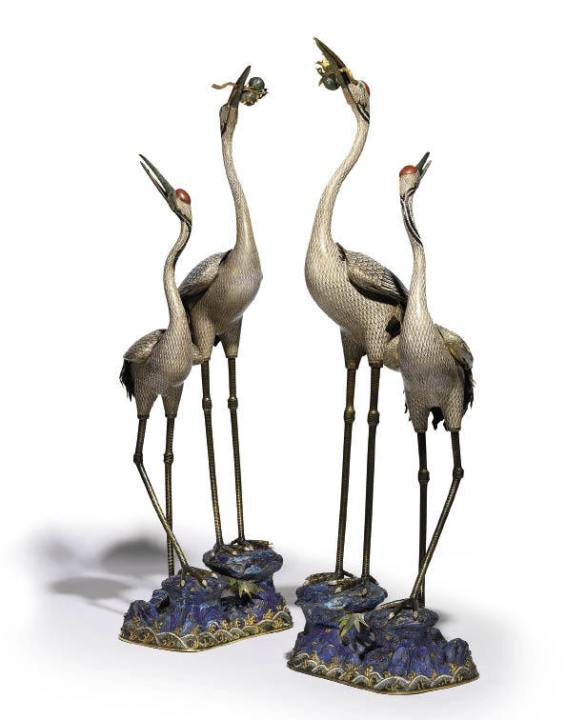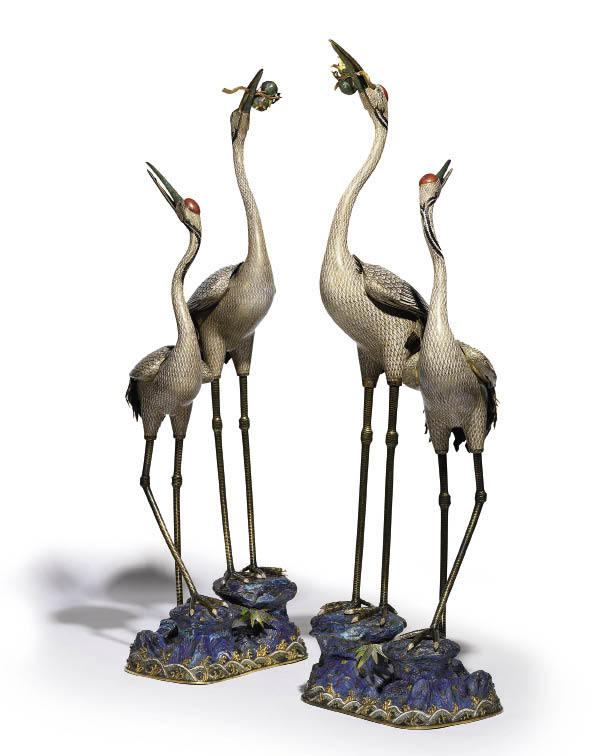A kind of madness has taken grip of the art market. It seems that the world’s super-rich have decided that money has no value — or at least that it has a value different from that understood by the rest of us. Just this month, one of Alma Tadema’s fanciful biblical epics was sold for an incredible $36 million (previous auction record $2.8 million), a Modigliani changed hands at $69 million (previous record $31 million), while a now famous porcelain vase made for the Emperor Qianlong, which turned up in a bungalow in Pinner, realised more than £53 million — a world auction record for any Chinese work of art.
Of all global art markets, none is more feverish than that of Chinese art. So rapidly is it rising for the most desirable works that even yesterday’s prices are rendered meaningless. A new auction record for Chinese porcelain had only been set last month when, in her latest record-breaking bid, business magnate Alice Cheng had paid $18.2 million for a double gourd vase also made for the Qianlong Emperor.
That price in turn transformed the cover piece of Giuseppe Eskenazi’s catalogue marking his 50 years in business into the snip of Asia Week in London. Between the publication of the catalogue in late September and the opening of the exhibition earlier this month, the world’s most respected dealer in Chinese art found that his exceedingly rare Qing puce-enamelled dragon vase was worth far, far more than its $25 million price tag.
All three vases illustrate the seismic shift in taste that has transformed the market in recent years. Traditionally, it was the purity and simplicity of the wares of the Song dynasty that found most favour in both East and West. The new breed of mainland Chinese billionaires prefers the opulent technical tours de force of the three great 18th-century emperors of the Qing dynasty.
A Chinese saleroom now has the air of a casino, as punters shout out bids far higher than the last. Discretion has gone to the winds and the hero of the day is not he who pays least for the finest, but he who spends most. But, as always in China, everything is not necessarily all it seems. It is perhaps too simplistic to see these high-profile purchases exclusively in terms of the new rich or state agencies repatriating their cultural heritage.
For years rumours have been circulating about money laundering, and of dealers bidding indiscriminately at auction in order to increase the value of their stock of authentic items and, more importantly, of fakes. There is also an alleged ‘gift culture’ operating at every level in business, where works of art are used as sweeteners.
Whatever the reason, the demand for Chinese works of art has never been greater. Not least when historic European or American provenances ensure authenticity. While it would be misleading to suggest that all great Chinese art is being repatriated, there is no doubt that most of the traffic is flowing from West to East. A case in point are the superlative imperial enamels from Alfred Morrison’s Fonthill Heirlooms Collections being offered at Christie’s Hong Kong on 1 December.
The gem is the majestic pair of 145cm-high imperial cloisonné enamel crane censers. Such cranes were made to flank an imperial throne — and several survive in situ. The Chinese word for crane is he, a homophone for the word harmony. Cranes are long-lived and so represent longevity as well as peace. These unusually large examples appear to be unique. Each pair represents not a single crane but a large bird with a smaller one looking reverentially up, which has led to the suggestion that they were commissioned by the Prince Hongli as a birthday gift to his father, the Yongzheng Emperor. It is also argued that these graceful cranes are the earliest known, and unlike later Qianlong examples they are modelled with a well-observed naturalism. The quality of the cloisonné enamel is extraordinarily fine and exceptionally detailed.
Alfred Morrison was the son of probably the richest commoner in 19th-century England. He used his vast fortune to amass an extraordinary art collection, appropriately housed in the surviving wing of William Beckford’s Fonthill Splendens in Wiltshire. A significant proportion of his Chinese ceramics and cloisonné was acquired in 1861 after the sacking of the Yuanmingyuan (Garden of Perfect Brightness) in Beijing by Anglo–French forces in 1860. One must only presume that Morrison particularly favoured these cranes as they appear in the portrait of him painted by Zuloaga. Most of his collection was dispersed but these pieces remained in the family. The cranes alone are expected to realise over HK$120 million ($15.6 million) and establish a new record for cloisonné.
It is hard to imagine that the Chinese will not be incensed by the sale of these looted treasures. After all, the bronze animal heads for the zodiac water clock in the same garden created a huge furore last year. What is surprising is why these cranes — or any of the other high-profile Chinese works of art recently sold from British collections for that matter — have not been referred to the Reviewing Committee on the Export of Works of Art. This body advises the government on whether cultural objects that people wish to export are national treasures. A quick call revealed that not since 1960 — possibly never — had the experts at the British Museum deferred a Chinese work of art to the committee for consideration.
Only last year, for instance, an export licence was granted without question for the Pelham jade buffalo. What made this massive jade of exceptional importance was its stand, which bore an inscription revealing that it was made for the closed quarters of the Qianlong Emperor. There is nothing like it in the UK. Nor does there appear to be, say, any other painting in Britain by the Jesuit missionary Giuseppe Castiglione, an artist hugely influential in the introduction of Western perspective in Chinese painting and whose own brush painting is an extraordinary synthesis of Eastern and Western sensibilities. Even so, the one found in a trunk in Scotland now belongs to Sheikh Saud al-Thani of Qatar.
There are, of course, outstanding collections of Chinese art in Britain, and any major work of art offered for sale here is likely to be expensive. The same can be said about the Turners routinely deferred for review. The Chinese want their cultural heritage very badly; the British evidently do not.







Comments